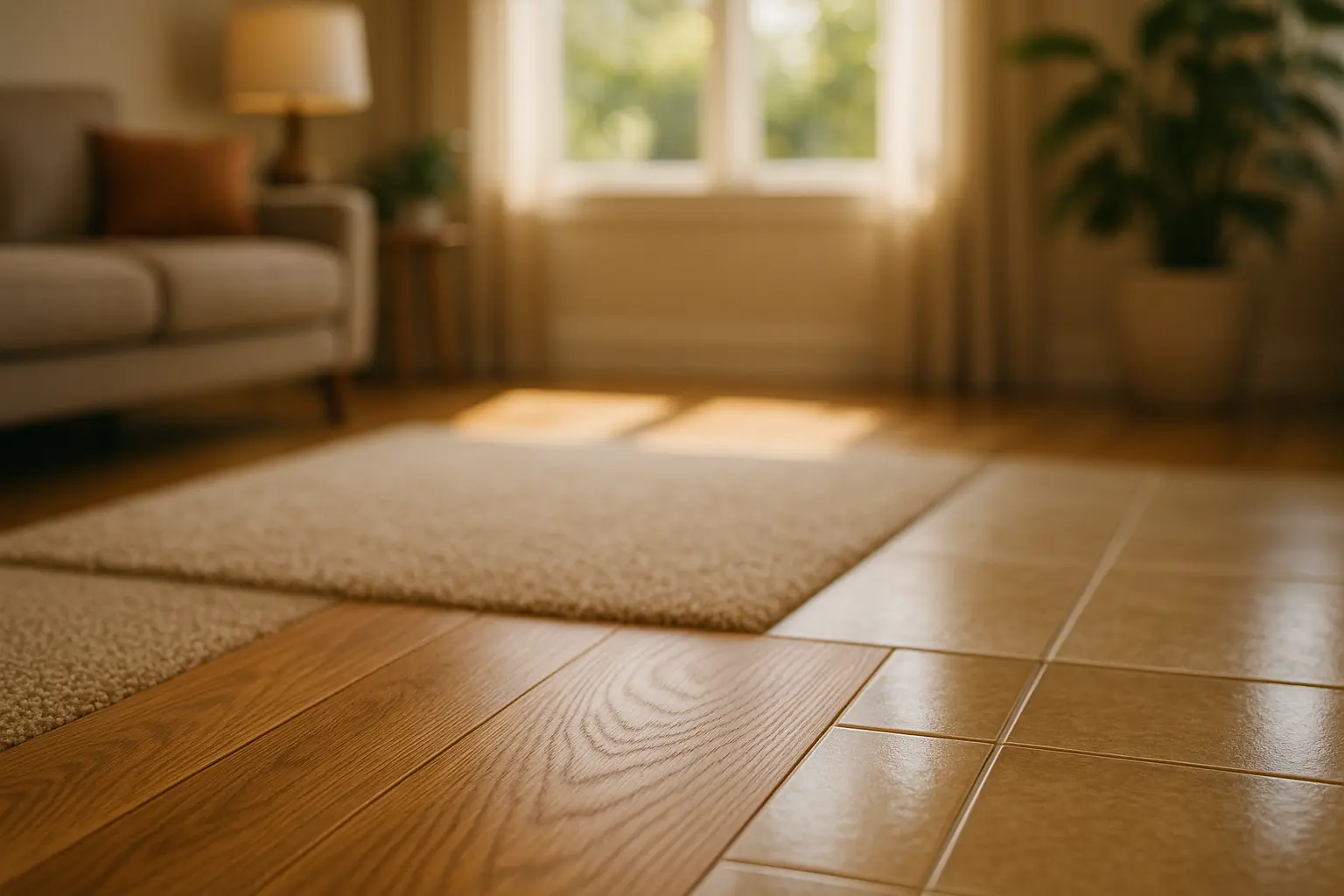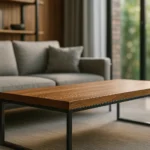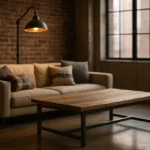In the ever-evolving world of interior design, choosing the right flooring is a pivotal decision that shapes the aesthetic and functionality of your home. As we stand in 2025, innovative materials and trends have redefined our options in flooring, blending style with practicality. When I step into a room, the flooring is the first thing my eyes meet, setting the tone for everything else. It’s not just about hardwood or tile; it’s about finding a harmony that reflects your personality within your space. Let’s delve into how you can choose flooring that truly matches your style.
Understanding Different Flooring Types
When venturing into the realm of flooring, it’s essential to grasp the array of materials available. Each offers unique characteristics that can redefine a room.
Hardwood Flooring
Hardwood flooring is a timeless choice, exuding warmth and elegance. With its rich grains and natural tones, it suits both traditional and modern interiors. It complements a vintage design effortlessly while adding a touch of sophistication to contemporary settings. The allure of wood floors lies in their durability and enduring beauty, making them a favorite for living rooms and bedrooms.
Vinyl and Laminate: Modern Alternatives
For those seeking versatility and affordability, vinyl and laminate are excellent contenders. Vinyl flooring’s water-resistant properties make it ideal for kitchens and bathrooms, and its array of designs enable it to mimic more expensive materials, like hardwood or tile. Laminate, on the other hand, offers a resilient surface perfect for high-traffic areas, reflecting the look of wood without the maintenance.
Tile for a Classic Touch
Tile floors offer unmatched durability and a cool elegance, fitting perfectly in kitchens and bathrooms where moisture is a concern. With options ranging from ceramic to porcelain, tiles come in various colors and patterns, allowing you to create a personalized design that matches your style.
Carpet: Comfort and Warmth
Carpet brings a cozy element to any room, offering warmth and softness underfoot, making it ideal for bedrooms and family rooms. With myriad colors and textures available, carpet can add a touch of luxury to your space while providing sound insulation and comfort.
Aligning Flooring with Room Design
One key aspect of choosing flooring is ensuring it complements your room’s existing or planned design. Every room has its own style, and the flooring needs to align with that vision.
Kitchen Flooring
In the kitchen, functionality is paramount. Floors that withstand spills and stains, such as vinyl or tile, are often preferred. A polished tile or stylish vinyl can add a modern flair, while maintaining practicality. Opt for lighter colors to make a small kitchen seem more spacious or darker tones for a dramatic effect.
Living Room Elegance
The living room is where style meets comfort. If seeking elegance, hardwood floors are unparalleled, offering a timeless foundation that can elevate any decor. For a modern twist, pairing hardwood with rugs can introduce texture and color, pulling the room together.
Bathroom Resilience
In the bathroom, water resistance is key. Tile remains a top choice, offering durability and style. Choose patterns that exude calmness and relaxation, turning your bathroom into a personal spa. Vinyl can also be a practical option, mimicking high-end materials while being budget-friendly.
Bedroom Ambiance
Your bedroom is your sanctuary, and carpet significantly contributes to its ambiance. With its plush finish, carpet provides comfort, making it inviting and warm. Neutral tones can create a serene atmosphere, while bold colors inject personality and vibrancy.
Color Coordination and Style
Color plays a pivotal role in defining a room’s ambiance and personality. When selecting flooring, it’s crucial to consider how its color will interact with your existing decor.
Matching & Contrasting
To create a cohesive look, coordinate your floor color with wall tones and furnishings. Light-colored floors can amplify natural light and make a room feel open and airy. Darker shades add depth and richness, creating a cozy environment.
Complementary Hues
Using complementary colors can bring dynamism to any room. A beige carpet can harmonize with pastel walls, while hardwood with a reddish undertone pairs beautifully with cool blues or greens, adding a sophisticated balance.
Embracing Trends
In 2025, bold colors and patterns are making waves, especially with vinyl and tile. Consider adding a statement floor with geometric patterns or vibrant hues to make the space uniquely yours, all the while matching your individual style.
Timeless Choices
While trends come and go, neutral tones like grays, browns, and whites remain timeless, providing a versatile canvas for any interior decor, ensuring longevity and adaptability.
Balancing Style and Practicality
While style is important, practicality should drive your final decision. The choice of flooring can drastically affect maintenance, comfort, and longevity, making it an essential consideration.
Maintenance Needs
Each flooring type comes with its maintenance requirements. Hardwood demands regular upkeep but rewards you with an unmatched patina. Vinyl and laminate offer easy maintenance, ideal for busy households, while tile requires grout cleaning to maintain its lustre.
Comfort Versus Durability
The balance between comfort and durability varies from room to room. Kitchens and entryways favor durable surfaces like tile or vinyl that withstand heavy foot traffic. Living areas or bedrooms might prioritize comfort with carpet or hardwood paired with underfloor heating.
Environmental Considerations
As eco-consciousness grows, more homeowners are considering sustainable options. Bamboo, a renewable resource, offers a stylish and eco-friendly alternative to traditional wood flooring, combining sustainability with aesthetics.
Budgeting Wisely
Flooring is an investment, so consider costs beyond purchase. Estimate life-cycle costs, installation, and maintenance to make an informed decision without compromising on quality or design.
Selecting the perfect flooring isn’t just about following trends or sticking to tradition; it’s about finding a style that resonates with you and your home. In 2025, the landscape of flooring offers more possibilities than ever before, allowing you to craft spaces that reflect your personal flair and functional needs. Remember, your floor is more than a surface—it’s the foundation of your style, anchoring the identity of your space. With careful consideration and a touch of creativity, choose the flooring that becomes the signature of your home’s unique story.
FAQ
What are the key factors to consider when selecting flooring that aligns with my personal style?
When choosing flooring, consider the overall aesthetic of your home, the room’s functionality, and your personal preferences in terms of color, texture, and material. It’s also important to think about how the flooring complements your existing furniture and decor.
How do different flooring materials affect the ambiance of a room?
Each flooring material can create a unique atmosphere. For instance, hardwood adds warmth and elegance, while tiles can offer a sleek and modern look. Carpets provide coziness, and natural stone can give an earthy, rustic feel. The choice of material can significantly influence the room’s mood.
Are there specific flooring options better suited for certain areas of the house?
Yes, certain flooring types are more suitable for specific areas. For high-traffic zones like hallways and kitchens, durable options such as tiles or laminate are ideal. In bedrooms, softer materials like carpets may be preferred for added comfort. Moisture-resistant flooring, like vinyl or tile, works well in bathrooms.
How can I ensure my flooring choice is both stylish and practical?
To balance style with practicality, select flooring that complements your aesthetic preferences while considering aspects like durability, maintenance, and budget. It may also help to choose neutral tones that can seamlessly integrate with future design changes.
How does the color of flooring impact the visual perception of space?
Flooring color can greatly influence how spacious a room feels. Lighter shades tend to make a space appear larger and more open, while darker tones can create a more intimate and cozy ambiance. Consider the natural light available and the room’s size when choosing your flooring color.



